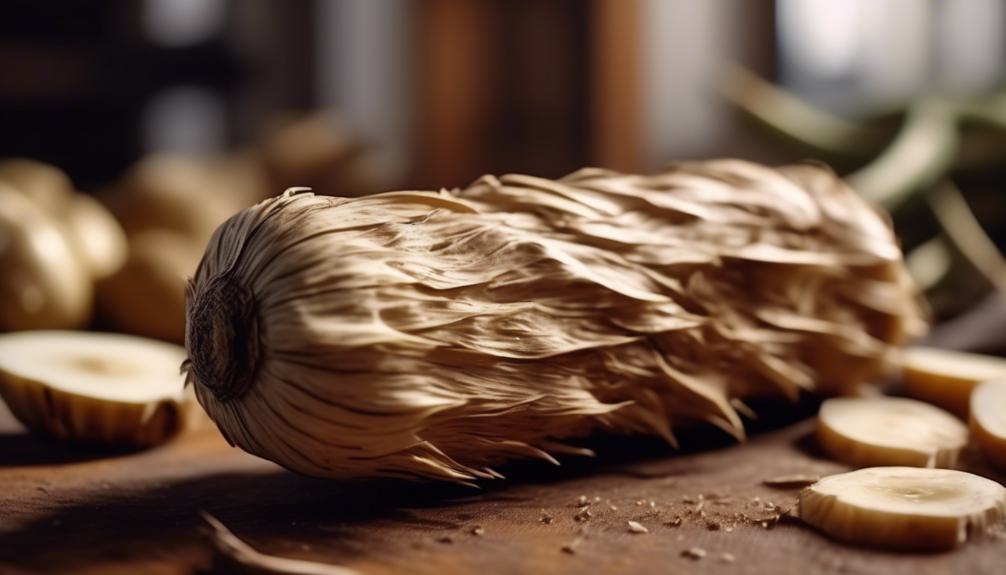Did you know that yucca plants are commonly used for ornamental purposes, but they also have culinary potential? You may have heard conflicting information about whether you can eat yucca raw, but there's more to the story.
Exploring the culinary possibilities and safety tips surrounding yucca can open up a world of new flavors and dishes for you to try. From understanding different varieties of yucca to learning about its nutritional value and safe consumption, there's a lot to uncover.
Join me as we delve into the fascinating world of yucca and discover the exciting culinary potential it holds.
Key Takeaways
- Yucca can be cooked in various ways, including boiling, steaming, frying, and roasting.
- Yucca root (cassava root) is safe to eat and can be used in stews, soups, and other dishes.
- Yucca flowers are edible and commonly used in salads.
- Raw yucca contains toxins and proper cooking is crucial to make it safe for consumption.
Understanding Yucca and Its Varieties
Yucca, a versatile and nutritious plant, offers a variety of culinary and practical uses, but it's essential to understand the distinctions between edible and non-edible varieties for both safety and enjoyment.
The yuca root, also known as cassava root, is safe to eat and can be cooked in various ways. The root can be boiled, mashed, or fried to make delicious yuca fries. However, it's crucial to note that red yucca, a non-edible variety, is toxic to humans and shouldn't be consumed.
When considering the nutritional value, yucca is a rich source of vitamins C, B, and A, along with essential minerals like calcium, phosphorus, potassium, and iron. Cooking yucca not only neutralizes the toxic compounds present in the raw root but also enhances its flavor, giving it a taste similar to that of a potato.
Additionally, yucca flowers can also be consumed and are commonly used in salads.
Understanding the differences between edible and non-edible yucca varieties is paramount for anyone looking to incorporate this nutritious plant into their diet.
Culinary Uses and Recipes
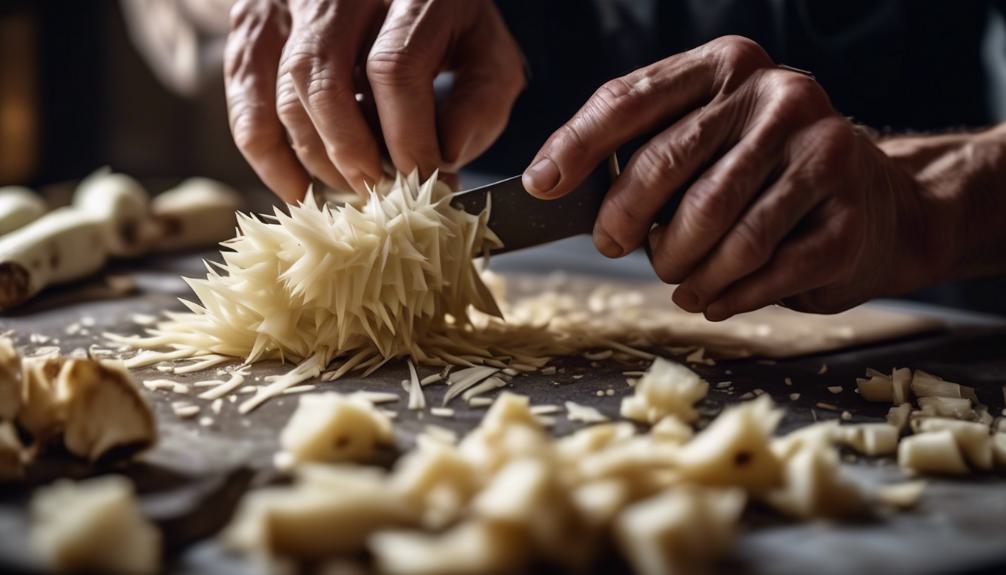
If you're exploring new culinary horizons, consider incorporating yucca into your recipes for a versatile and nutritious addition to your meals. Yucca, also known as cassava or Yuca, offers a variety of culinary applications. The root, once cooked, bears a resemblance in taste and texture to potatoes, making it a great addition to stews, soups, and even as a standalone side dish. Boiling, steaming, frying, or roasting yucca are all viable cooking methods. This plant, commonly used in Latin American, African, and Caribbean cuisines, provides a unique flavor and texture to dishes.
When working with yucca, it's crucial to ensure proper preparation due to its cyanide content. This involves peeling and cooking the root thoroughly to make it safe for consumption. Yucca can also be used to produce gluten-free flour, adding a new dimension to your baking endeavors. Additionally, yucca flowers can be eaten raw or boiled and incorporated into various dishes. The plant's versatility extends beyond the kitchen, as it can also be used to make natural shampoo and soap, and its leaves provide fiber for making cord and ropes.
Safety Tips for Consuming Raw Yucca
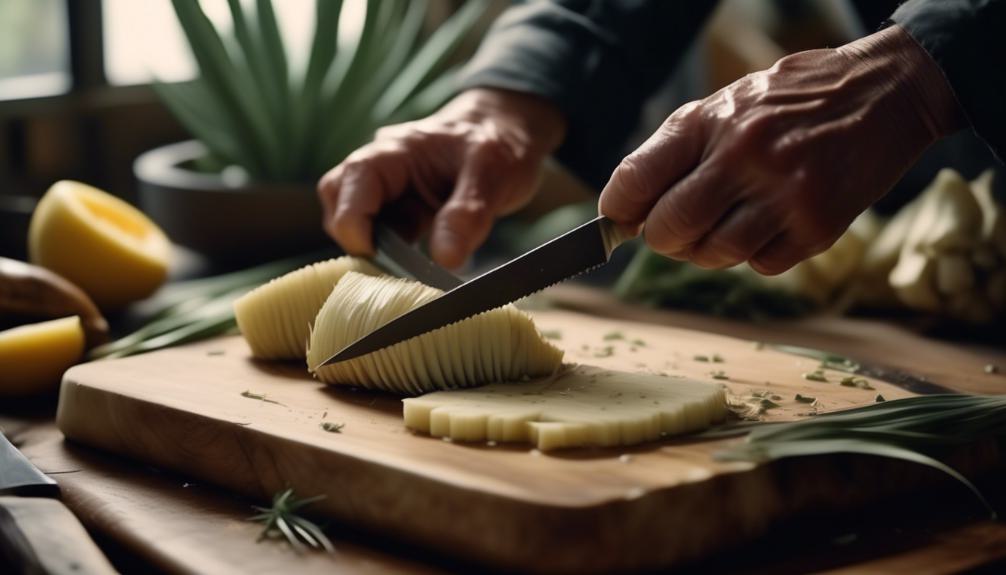
To ensure your safety when consuming yucca, it's crucial to be aware of the potential risks associated with its raw consumption and take appropriate precautions. Raw cassava roots, also known as yucca, contain cyanogenic glucosides, which are compounds that can release hydrogen cyanide when ingested. This can be toxic to your immune system and overall health. Consequently, proper cooking is a crucial step in making yucca safe for consumption. When eaten raw, these cyanogenic glucosides pose a potential risk to your well-being.
It's important to note that some parts of yucca, such as the sap, are mildly toxic to humans. Exercise caution when handling and preparing the root vegetable to avoid any potential adverse effects.
Additionally, if you plan to use yucca for medicinal purposes, especially in children, pregnant women, or nursing mothers, it's advisable to seek advice from a healthcare professional due to the lack of safety research in these specific groups.
Storing and Preparing Yucca
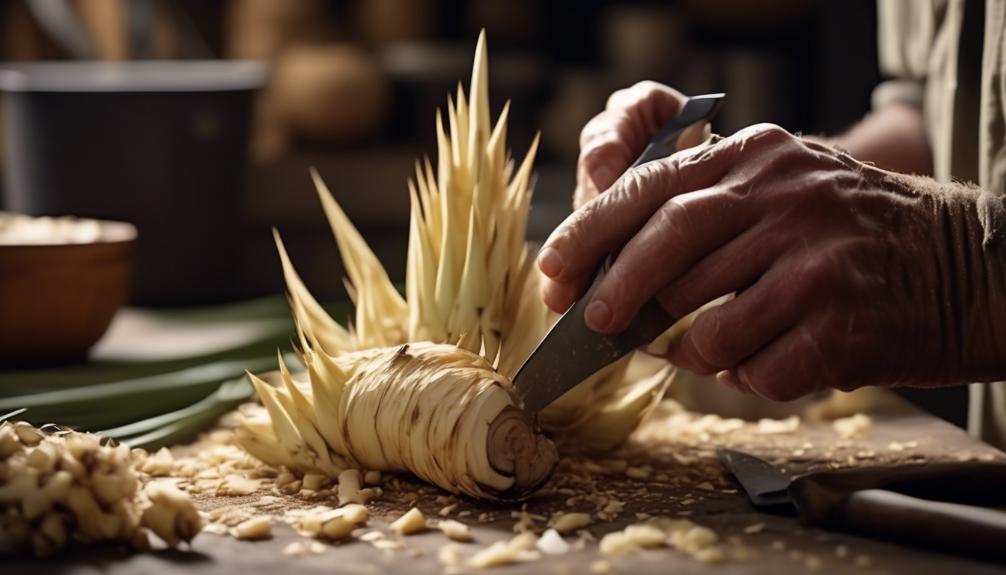
After acquainting yourself with the safety precautions for consuming yucca, it's time to master the art of storing and preparing this versatile root vegetable to unlock its culinary potential.
- Store unpeeled yucca in a cool, dry place for up to a week, or peel and refrigerate, changing the water every two days; it can also be frozen for up to three months.
- Rinse yucca root, cut off the ends, and peel the thick skin with a knife, removing the hard core before cooking or storing.
- Boil, fry, steam, or roast yucca, and season with salt or various spices for different culinary applications.
- When buying yucca, look for firm roots without soft spots or sour smell, and avoid any discoloration or black specks when cut open.
- Properly prepared yucca can be used in a variety of dishes and cuisines, offering a versatile and nutritious addition to meals.
To ensure your yucca maintains its freshness and taste, store it properly and follow these simple preparation steps.
Whether it's being used as a staple food, a source of fiber and potassium, or even to produce tapioca starch, yucca's culinary possibilities are vast. By understanding the storage and preparation techniques, you can harness the full potential of this nutritious root vegetable without encountering any health problems.
Exploring Yucca's Nutritional Value
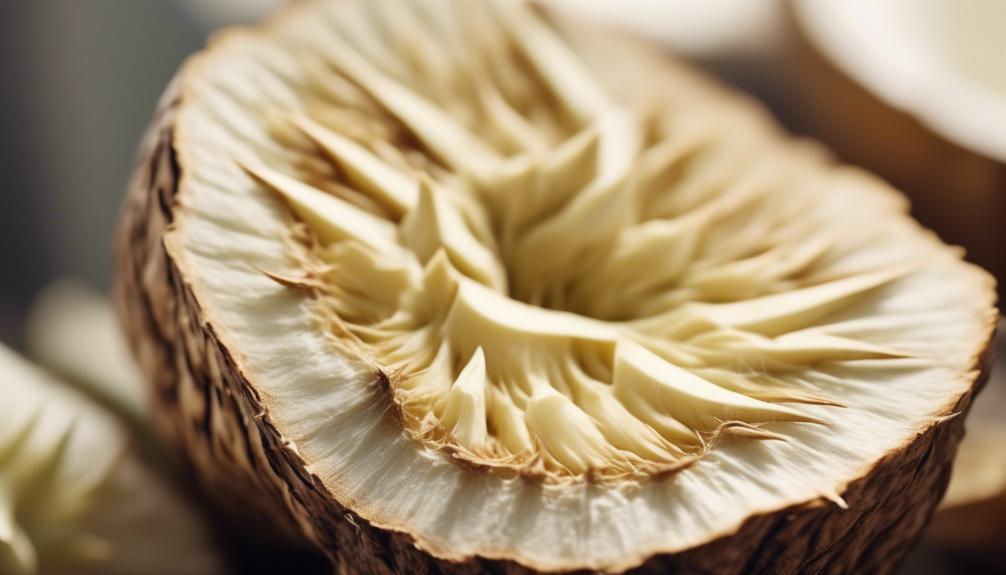
Yucca's nutritional value is a powerhouse, offering high levels of essential vitamins and minerals that make it a beneficial addition to your diet. This versatile root, commonly found in tropical regions, is packed with nutrients such as vitamins C, B, and A, as well as calcium, phosphorus, potassium, and iron. In fact, it contains more fiber and potassium than a potato, making it an excellent choice for boosting the immune system and providing anti-inflammatory properties beneficial for arthritis and rheumatism. Yucca supplements are even recommended for certain health conditions due to its medicinal uses and the presence of steroid saponins acting as anti-inflammatory molecules. Native Americans have long used yucca in various culinary applications, fermenting its fruits to produce a ritual beverage, showcasing its cultural significance and versatility. However, it's important to note that yucca is toxic when consumed raw due to cyanogenic glucosides, and certain species may cause irritation in sensitive individuals, so proper precautions are necessary.
| Nutrient | Benefits |
|---|---|
| Vitamins | Boost immune system |
| Minerals | Anti-inflammatory properties |
| Fiber | Regulate digestive health |
| Potassium | Support heart and muscle function |
Frequently Asked Questions
Can You Eat Yucca Raw?
Yes, you can eat yucca raw, but it's not recommended due to toxic compounds. Cooking yucca thoroughly neutralizes these toxins, making it safe to eat. Enjoy yucca in various dishes, reaping its nutritional benefits.
Can You Eat Yucca?
Yes, you can eat yucca. It's an edible, starchy plant used to make cassava and tapioca. However, be cautious as some parts, like the sap, are mildly toxic. Cooking yucca makes it taste similar to a potato.
How to Cook Yucca Safely?
You can cook yucca safely by always peeling, washing, and boiling it to reduce toxins. Avoid consuming it raw to prevent health risks. Ensure thorough cooking to detoxify completely. Seek guidance for safe preparation.
Are There Any Health Benefits to Eating Yucca?
Eating yucca raw offers health benefits such as high vitamin content, fiber, and potassium. It can boost your immune system, protect against cell mutations, and provide diabetic-friendly energy. Incorporate it into your diet for its nutritious value.
Conclusion
So, while yucca flowers aren't safe to eat raw, yuca, the root of the cassava plant, can be safely consumed after cooking. Whether you're making yuca fries, yuca bread, or incorporating yucca into your favorite dishes, it's important to follow safety tips and properly prepare this versatile plant.
With its rich nutritional value and culinary possibilities, yucca is definitely worth exploring in your kitchen. Happy cooking!

